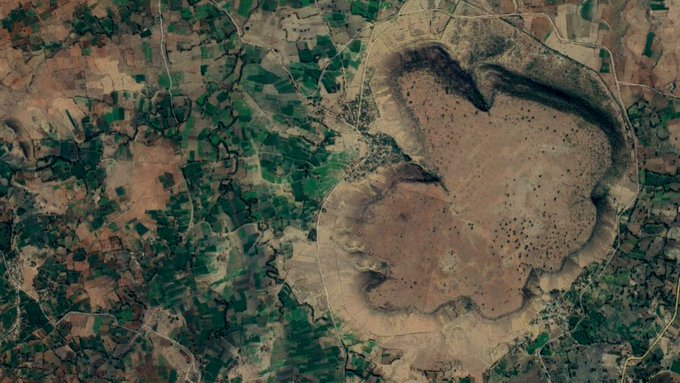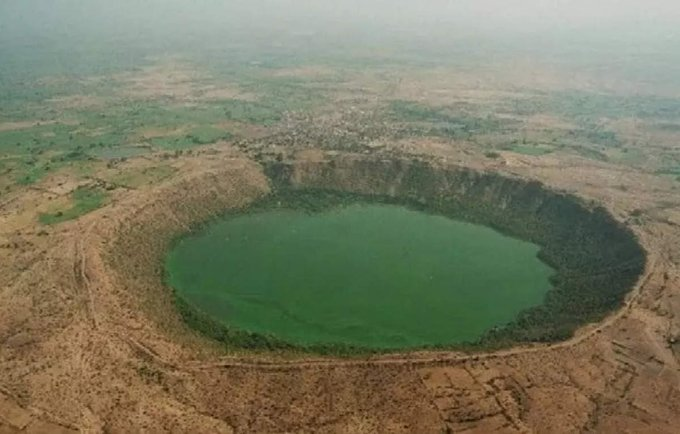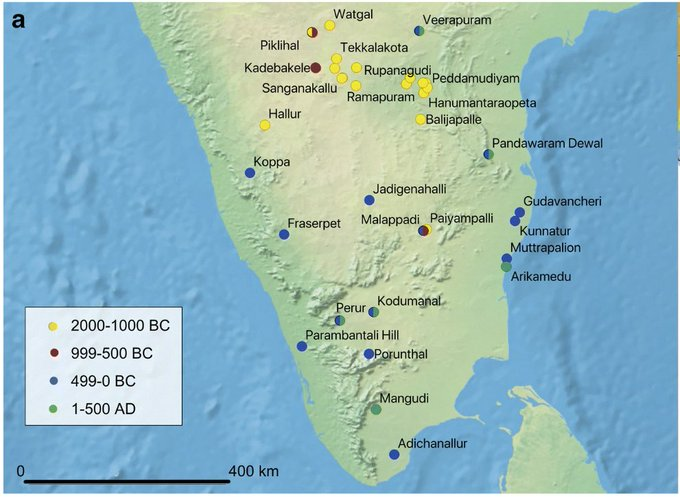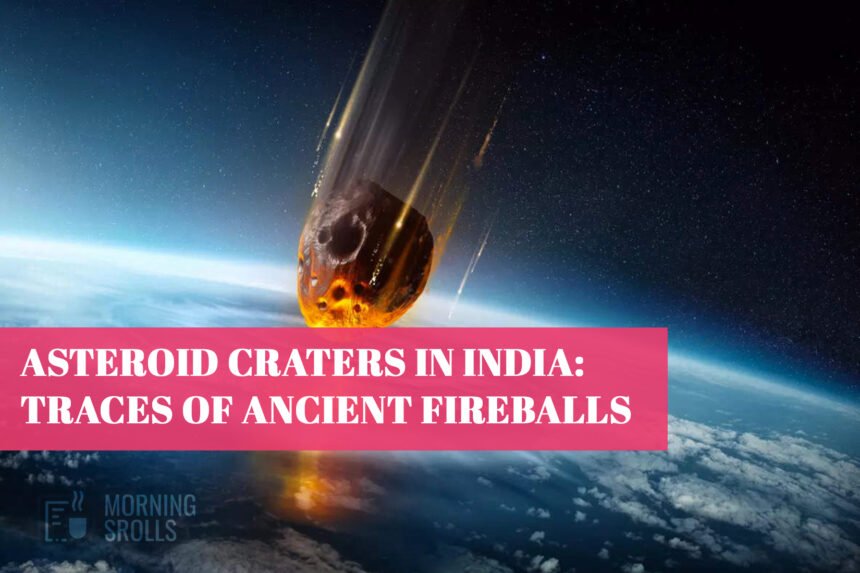As discussions continue about the slim chances of Asteroid 2024 YR4 impacting India, it’s worth remembering that the country’s landscape already carries marks of ancient asteroid collisions. India has three confirmed impact craters, which provide insights into how these cosmic events shaped the land—most notably playing a role in forming the vast Deccan Plateau.
India’s Impact Craters: Traces of the Ancient Past
Lonar Crater – Formed around 35,000 to 50,000 years ago by a meteorite impact, this 1.8 km-wide crater in Maharashtra is one of Earth’s rare basaltic impact sites. Its unique saline-alkaline lake and maskelynite—a mineral created by intense shockwaves—confirm its extraterrestrial origin.

Dhala Crater – The largest asteroid impact crater in Asia, spanning 11 km in Madhya Pradesh, is around 2.5 billion years old. It offers valuable insights into Earth’s early history and the cosmic impacts that shaped our planet.

Ramgarh Crater – This 165-million-year-old, 10 km-wide crater in Rajasthan has a central peak, a key feature of powerful asteroid impacts.

These craters serve as natural labs, helping scientists understand how planetary surfaces evolve and how life adapts to extreme environments.
The Chicxulub and Deccan Link: A Twin Disaster
India’s history with asteroids dates back to the Chicxulub impact that occurred 66 million years ago.
This massive asteroid struck Mexico’s Yucatán Peninsula, wiping out 75% of Earth’s species, including dinosaurs. The impact sent powerful seismic waves across the planet, shaking magma chambers beneath India. This triggered one of Earth’s largest volcanic eruptions.
For the next 760,000 years, the Deccan Traps erupted, releasing 1.2 million cubic kilometers of lava and covering 500,000 square kilometers under thick basalt layers. These events led to extreme climate changes—volcanic winters caused by sulfur dioxide and long-term global warming from carbon dioxide. Over time, these changes reshaped ecosystems and helped form the Deccan Plateau as we see it today.
How Asteroid Strikes Shaped India’s Landscape

Formed by volcanic eruptions from the Deccan Traps, the Deccan Plateau is rich in minerals, playing a key role in India’s agriculture and industry.
Its fertile soil supports major crops like cotton and sugarcane, while its iron ore, coal, and mica reserves drive economic growth. The region’s diverse wildlife, including tigers and blackbuck, thrives in habitats shaped by these ancient geological events.
Watching the Skies for Future Threats
While ancient asteroid impacts shaped India’s landscape, modern space agencies like ISRO are now keeping an eye on near-Earth objects. One such asteroid, Apophis (340–450m wide), is expected to pass just 32,000 km from Earth in 2029. This highlights the importance of staying alert to potential space threats in the future.
ALSO READ – Historic Achievement: Parker Solar Probe Completes Its Closest Flyby of the Sun










